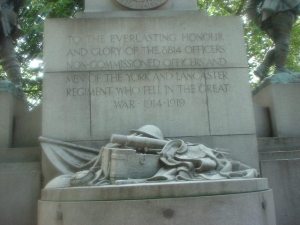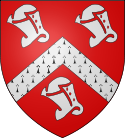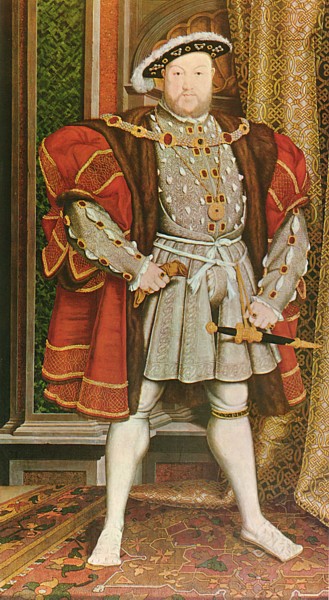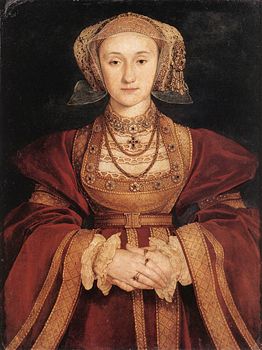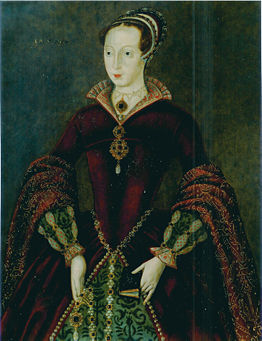Archive for the ‘History’ Category
- In: History
- 2 Comments
It all began in 1914 – one of the greatest wars in history, triggered off by a few angry people.
The Archduke Franz Ferdinand of Austria was visiting Sarajevo in Bosnia when he and his wife were ambushed by a few young Serbian men. They were a part of a group called Young Bosnia, a group filled with people who hated Austria’s oppressiveness. Fueled by anger, four of them set out to ambush and assassinate the Archduke and his wife and succeeded. The person who pulled the trigger was a young man called Gavrilo Princip. Little did he know that by doing so, he had just started one of the greatest wars in history – known as, the First World War.
But how could a war as humongous as the First World War just happen? How could, all of a sudden, one of the greatest bloodsheds in history suddenly begin? The answer is, they don’t just suddenly begin. The First World War is a product of a great build up of tension over a long period of time. When young Gavrilo Princip pulled the trigger, he was actually lighting the fuse of a great bomb that held immense tension between the main countries involved in the war.
Tensions had been running high long before the war between Germany, Britain, France, Austria-Hungary and Russia. The main reasons were colonies (such as the Balkans) and the build up of armies. Eventually, the war was broken up into two sides, one was the Triple Entente, which was comprised of France, Britain and Russia, the other side was called the Dual Alliance, which encompassed Germany and Austria-Hungary.
With all the tension going around, it was hard to believe that war didn’t happen sooner – but there was a forced and strained peace in an effort to delay the war as long as possible for no one wanted to be the one to start it all off.
Despite the forced peace, everyone was secretly getting ready for a war and forming a battle plan. The most controversial of all was the Germans’ Schlieffen Plan. The plot was to station a small army in the east to detain Russia, while the rest of Germany’s forces would smash through Belgium, overcome and defeat France and Britain and consequently knock them out of the competition.
However, their plan failed when they underestimated Russia and France’s strength and they were defeated twice. The war deteriorated to a War of Attrition – as both sides were forced into a stalemate, and both were in the same position and were reduced to cold hard murder as the last chance of winning, as neither had an advantage over the other.
The Great War eventually came to an end, and though the Triple Entente won, really, both sides lost, as many lives were taken, and many nations scarred.
The Great War, though now it is more commonly called the First World War or World War I, had a great impact on the world. For example, in Britain before the war, working class men could not vote. But when the war hit, the government saw these men risking their lives everyday for their country, and felt that that was unfair to them and started to pass a new law saying that working class men could now vote. Women, or more specifically, the Suffragists and Suffragettes, had been campaigning for women to get this very thing for a long time – the right to vote. They saw their chance, and started campaigning hard, and succeeded.
It is likely that women may have never gotten the vote, and have never been able to get the same jobs as men and so on because when the war hit, many young men left their countries to fight in a foreign land, leaving many jobs crucial to the war empty. Women saw their chance, and successfully got the vote in 1918.
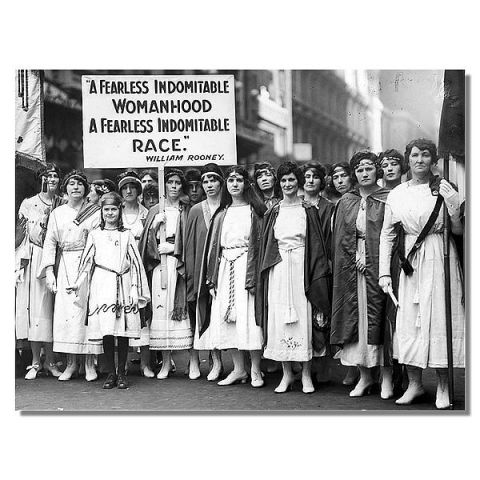
A year after women won full voting rights, these women joined in the St. Patrick's Day Parade on Fifth Avenue on March 27, 1921.
The big three and the Treaty of Versailles
The Great War caused immense casualties like never before. On the Allied side, Britain lost 750,000 soldiers, with 1,500,000 wounded, France lost 1,400,000 soldiers, with 2,500,000 wounded, Belgium lost 50,000 soldiers, Italy lost 600,000 soldiers, Russia lost 1,700,000 soldiers, and America lost 116,000 soldiers.
Fighting against the Allies, Germany lost a whopping 2,000,000 soldiers, Austria-Hungary lost 1,200,000 soldiers, Turkey lost 325,000 soldiers and Bulgaria lost 100,000 soldiers. The total losses are estimated to be 8.5 million with 21 million wounded.
The truly tragic thing about the World War I is that after all that bloodshed, there went on to be another world war where there was even more bloodshed, so all the soldiers who lost their lives in the World War I were in vain.
As well as the loss of millions of lives, the remaining lives were in a chaos. Much of Europe had been turned into rubble; many families torn apart. The winners of the war were not about to give Germany (who they blamed the war on) any mercy. So when the main leaders of the Allies sat down to map out what exactly was owing to them, they did not hold back.
The main leaders were known as the big three, and they consisted of David Lloyd George of Britain, Georges Clemenceau of France and Woodrow Wilson of America. The first two were perfectly happy to punish Germany to the extreme, as that was what their country expected of them. Woodrow Wilson on the other hand, wanted to be a little more merciful, he did not want Germany to become resentful and start another war. It turns out that he would be right.
After several gut wrenching days, the big three decided on several terms and conditions for Germany which would become the Treaty of Versailles. An easy way to remember all the conditions of the treaty is GARGLe: Guilt, Arms, Reparations, German territory and League of Nations.
- Guilt: As previously stated, the Allies believed that Germany was the cause of the war, so the treaty declared that Germany should take all the blame for starting the war.
- Arms: Germany’s pride was its army. Despite having lost the most soldiers in the war, they still had a substantial army. The treaty took that away; Germany was forced to cut down their army to the very minimum, which left them rather defenseless.
- Reparations: All the countries involved in the war had suffered immense damages to their infrastructure. In Europe, buildings which had been around for hundreds of year were in a heap of rubble. The total cost of reparation which Germany was forced to pay was 6,600 billion marks (£6,600 million pounds). That is 2% of Germany’s annual income production.
- German territory: Germany had to give up all of her colonies to the winning countries. Alsace-Lorraine was given to France, Eupen and Malmedy was given to Belgium, Northern Schleswig was given to Denmark, and Hultschin was given to Czechoslovakia.
- League of Nations: This was a peacemaking idea from the peacemaking Woodrow Wilson. He wanted a place where all global disputes between countries could be sorted out fairly, in hopes of avoiding another war. As a snub, Germany was not allowed in until it learned to be more peaceful. Ironically, the creator of the league’s country did not join as America refused to, on the grounds of them adopting an isolated policy.
It was all very simple; Germany had to sign the treaty or risk being invaded by the Allies. Nevertheless, it was not an easy choice.
Germany’s reaction to the treaty
As you can imagine, the Germans were not happy. They were clearly not the starters of the war, but were forced to take the blame anyway. Already wiped out, the reparation fee was impossible for Germany to pay, so in desperation, they hyper inflated their currency to the point where a loaf of bread would cost 20 billion marks.
From this point on, Germany blamed everything that went wrong on the treaty. What went wrong? Well, after the war, the German government supplied a war pension to the survivors of the war, but shortly after stopped providing it. After paying one installment of the reparations, Germany refused to pay anymore, thus French soldiers marched into a part of Germany to force the money out of them, the soldiers bullied the citizens, and the treaty gave them the power to do so.
The Germans were angry, and needed someone, something to blame. They blamed the new government for signing the treaty; they blamed the old government for leading them into the war; but most of all, they blamed the treaty for all of their problems. They also blamed the people behind the treaty, namely, the big three and their countries.
“Something has to be done, Germany could not carry on this way, and we must FIGHT for all of our previous glory.”
That is the gist of what a youth at that time preached to the citizens, who ate it all up.
The Great War was over and the countries were slowly recovering, but the war left a lot of tensions, for although the war had ended, most of the reason was because the stalemate was costing too much to maintain. As predicted by Woodrow Wilson, the treaty would cause yet another war, an awful, gruesome and brutal war. This unfortunately leads us to another scarring, tragic and equally horrific war: World War II. This war would be led by the youth who preached to the citizens and easily started the uprising. His name was Adolf Hitler.
The Lily Maid of Astolat
History, being rather unclear, has many different versions of Elaine, Lily Maid of Astolat, from the time of King Arthur and the Knights of the Round Table. In the French version of King Arthur, Mort Artu, she tries to get Sir Lancelot to wear her sleeve in a joust after she declares her love.
In Thomas Mallory’s Le Morte D’Arthur, she has fallen in love with Lancelot and he agrees to wear her sleeve in a jousting competition as the alternative to becoming involved with her.
In both versions, Elaine’s father, Bernard of Astolat, organises a jousting tournament, in which Lancelot participates. When Lancelot is wounded, Elaine convinces her father to bring him to her chamber for her to nurse him back to health.
While playing nurse, Elaine falls deeply in love with Lancelot. But when she confesses her love for him, he rejects her for he is in love with Queen Guinevere who is King Arthur’s wife. Unfortunately for Lancelot, King Arthur is his boss, and makes it hard for him to see Queen Guinevere. Elaine is heartbroken when Lancelot rejects her and consequently dies of a broken heart. As per her instructions, her family puts her in a barge and floats her down the river to Camelot with a note to Lancelot.
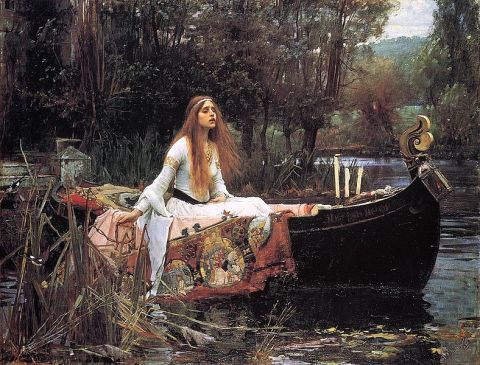
Elaine floating down the river.
When she reaches Camelot, she is discovered by the lords, ladies and knights of Camelot. Queen Guinevere is outraged with jealousy until she finds out that Elaine died a virgin and nothing ever happened between her and Lancelot.
Lancelot is guilt-ridden and pays for a lavish funeral for Elaine (which could have been what her family had hoped for in the first place by sending her floating down the river).
The Lady of Shalott
Alfred Tennyson, also known as Alfred, Lord Tennyson, is one of the more popular poets in the English language. He was also Poet Laureate – a position that he held longer than any laureate before or after him.
One of Tennyson’s most famous poems is The Lady of Shalott, based on the legend of Elaine of Astolat. Tennyson’s poem was on a poem he had read, Donna do Scalotta, and so it is very different from Thomas Mallory’s version. In this version, no joust ever took place, Elaine had never met Lancelot before, and she is under an undisclosed curse to forever weave a magic web in an isolated tower, with only a mirror to reflect the view from her window.
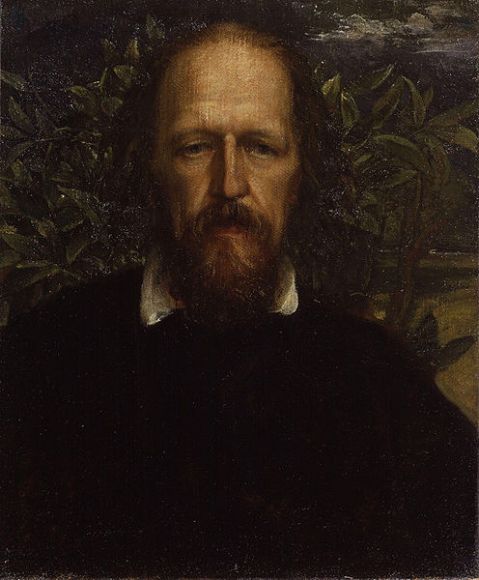
Lord Alfred Tennyson
However, one day the handsome knight, Sir Lancelot, rides past her window in the tower and the effect that he has on her is so strong that she turns to look out the window at him and the curse is broken. She leaves her tower and finds a boat near a riverbank. She writes her name on the prow and floats down the river to Camelot (in a subconscious effort to chase Lancelot, perhaps).
But before the boat reaches Camelot, she freezes to death and arrives at the palace of King Arthur where Lancelot stands among the Knights, lords and ladies, admiring her beauty.
“Under tower and balcony,
By garden-wall and gallery,
A gleaming shape she floated by,
A corse between the houses high,
Silent into Camelot.
Out upon the wharfs they came,
Knight and burgher, lord and dame,
And round the prow they read her name,
The Lady of Shalott.
Who is this? and what is here?
And in the lighted palace near
Died the sound of royal cheer;
And they cross’d themselves for fear,
All the knights at Camelot:
But Lancelot mused a little space;
He said, “She has a lovely face;
God in his mercy lend her grace,
The Lady of Shalott.”
– Excerpt from Tennyson’s The Lady of Shalott.
The story of Elaine of Astolat has been changed and re-moulded many times. The unrequited love that she bore is very much a human experience, making her character more real than most of the others in the time of King Arthur. Though her actions may have been a bit drastic, she has given us great stories and poems, for such is the wonder of the Lady of Shalott.
The French Revolution
Posted on: July 24, 2009
France was not always the generally peaceful country which we know today. In the 1700s, France underwent an enormous upheaval which undermined its Monarchy and changed to a Republican government.
But how did it all start? Well, in 1789, the people of France decided that it was…
…the Last Straw
When King Louis XVI of France ascended to the throne, the country was already nearing bankruptcy. Historians generally think that Louis XVI’s predecessor, King Louis XV, is to blame. Louis XV had fought many wars; therefore sending the country into an economic crisis. Naturally, the people of France were not happy with that, as taxes were raised very high for the starving nation. At that time, the streets of France were terribly dirty, and diseases were common. There were many people living on the streets as well. For the impoverished people, looking at the well dressed royals stuffing themselves certainly did not help matters.
In fact, it was the last straw.
Do You Hear the People Sing?
In 1789, the people of France, lead by Napoleon Bonaparte, began the fight against the monarchy. But what really started the ball rolling was the Tennis Court Oath. The Tennis Court Oath was the historic event where 576 out of the 577 members of the Third Estate (the Third Estate consisted of the everyone who was not rich, in other words, the poorly paid working class people, and the even poorer, poorly paid peasants) and a few members of the First Estate were fed up with the Monarchy, and gathered themselves into an indoor tennis court and solemnly swore a collective oath which goes as follows:
We swear never to separate ourselves from the National Assembly, and to reassemble wherever circumstances require, until the constitution of the realm is drawn up and fixed upon solid foundations.
Not long after the Tennis Court Oath, they stormed the Bastille prison, for though it held few prisoners and was about to close, the Bastille symbolized the royal oppression, and thus, it fell. The guardian of the Bastille was Bernard-René de Launay, who was actually born in the Bastille prison, as his father was the previous guardian. De Launay felt the brunt of the National Assembly’s force, and was battered to death by a raging mob.
Four years and two months after the revolution began, the era which would be known as “The Reign of Terror” (1793 – 1794) began. Led by Napoleon Bonaparte, monarchs (including King Louis XVI) were guillotined left; right and centre, and an estimated 30,000 people were killed all across France. The first victim of the guillotine was the unpopular and tragic queen, Marie Antoinette. Ironically, when Marie Antoinette first reached France, she was but 14, and adored by the people.
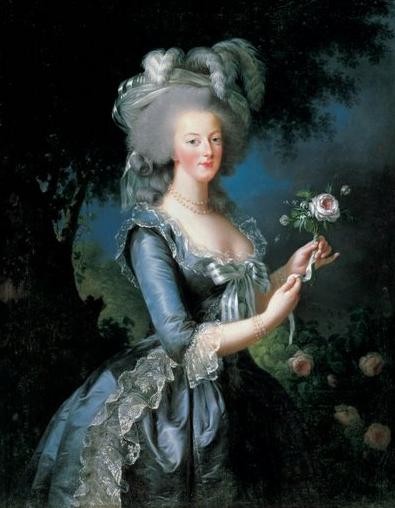
Things went downhill around 1782 – 1785; Antoinette had already given birth to a daughter and a son, and with a family enlargement in mind, she bought the Château de Saint-Cloud independently from the husband, King Louis XVI. At that time, the public was developing a highly frivolous image of the Queen, and the purchase of the Château de Saint-Cloud certainly did not help. The public was quickly seeing Marie Antoinette as an empty-headed, spendthrift foreign queen.
Liberty, Equality, Fraternity
In 1799, while stranded in Egypt, Napoleon heard news of the British’s temporary departure from the French ports and set sail for France. Upon returning, he set about to seize power. On the 9th of November 1799, he overthrew the French Directory (the body of five which had been holding the power in France) and replaced it with his own French Consulate, which consisted of three consuls. Of course, he declared himself the First Consul, but eventually, it lead to just one single consul, then finally, Emperorship.
However, Napoleon was not always in France, as he was busy conquering other countries and whatnot. But in 1812, his luck began to change as he was defeated in Russia. From then on, it all went downhill, and he lost his last battle, the Battle of Waterloo in 1815.
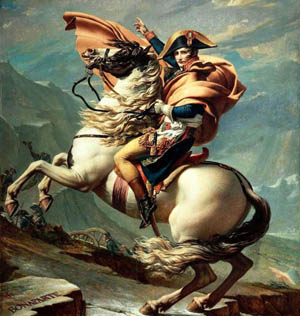
Napoleon died in 1821, it is generally thought that he died from stomach cancer, though some people say he was murdered by arsenic.
The French Revolution was a critical period in history, not only for France, but also for Britain, whose English radicals and numerous liberals wholly supported the revolution. Their motto was “Liberty, Equality, and Fraternity.”
The French Revolution’s influence stretches to the 21st century, mostly thanks to Victor Hugo’s novel, later turned into a musical, Les Misérables (also known as Les Mis or Les Miz). On October 8, 2006 the show celebrated its 21st anniversary, and it’s achievement as the longest running West End musical. Interestingly, it’s not written by Andrew Lloyd Weber, who wrote a significant amount of the modern musicals showing today, but in the original French version, the music is by Claude-Michel Schönberg and the lyrics are by Alain Boublil and Jean-Marc
Les Mis the book and the play has been translated into various languages, from Polish to Japanese to the obvious English. A recent revival of Les Misérables in pop culture is Britain’s Got Talent’s Susan Boyle’s version of “I Dreamed a Dream” from Les Misérables.
The French Revolution started in 1789 and ended in 1799. In those ten years, France entered a zone of turmoil, grief, and violence. But it was also a time of renewal, a much needed change of government and overall change for the better.
The Tudors
Posted on: September 23, 2008
- In: History
- 5 Comments
When you think “king” or “queen”, the country that would probably first pop into your mind would be England.
England’s monarchy is not the most scandalous (although it comes pretty close to being so), but it’s certainly one of the longest. It goes all the way back to AD 477 when Aelle founded the kingdom of Sussex. The very first kings and queens were Anglo-Saxons – add some Scottish blood to the mix and you get the modern British.
Perhaps the most famous royal family was the Tudors. The first Tudor King, Henry Tudor the VII, ascended to the throne when he won the Wars of the Roses (1455-87), a series of civil wars in England fiercely fought between the Houses of Lancaster and York. It was not an easy feat – the Wars of the Roses was an intense battle despite having a name that’s all flowery and soft. It was the turning point for England’s monarchy – who ever won it would become the new king or queen of England.
Both the House of Lancaster and the House of York had strong claims to the throne. The Wars of the Roses was made up of three stages (much like a boxing match), with all three stages featuring wealthy and important families battling it out for the throne. The Yorkists won the first round, with Edward IV coming away as the new king.
The two houses had flags with, naturally, roses on them. It was the white rose of York against the red rose of Lancaster. When the Wars of the Roses ended, Henry VII combined both flags, naming it the “Tudor Rose”. The result was the outer part of the rose was red, and the inner one white. You have to wonder that the Yorkists did not object to their rose being smaller.
The third and final round was the beginning of a significant period of time. As it was, the most vital move was off the battle field, Henry VII married Richard III’s niece, Elizabeth of York, thus securing himself the throne. And the Tudor age had begun.
The Tudors are in the House
Things were good for the Tudors; they were now the royal family and had immense power. Henry VII had four children who survived infancy without much fuss.
Henry VII needed to form an alliance with Spain. But how? Well, much like his own marriage, Henry VII arranged a marriage for his eldest son, Arthur, Prince of Wales with Catherine of Aragon, a Spanish princess. However, after being married for four months Arthur died, leaving the throne in the hands of his brother, Henry VIII.
Henry VIII’s first wife was Catherine of Aragon, a Spanish princess. But wait, didn’t Arthur have a wife with the same name? Who also happened to be a princess? Well, Catherine of Aragon, Henry VIII’s wife, and Catherine of Aragon, Arthur’s wife, was… the same person.
You see, Arthur’s good ol’ dad, Henry VII, had married him to Catherine of Aragon in order to ensure an alliance with Spain. But when Arthur died, Henry VII acquired a Papal dispensation that allowed the young Prince Henry (who became Henry VIII) to marry Catherine of Aragon, for how else would they maintain the alliance with Spain? However, Henry VII held back the marriage until after his death.
Henry VIII is one of the most well-known kings of British history. He is known for his tyranny, his six wives, and the fact that he divorced more than half of his wives and was about to execute the last one, Catherine Parr, when he died. Things were hard for women in Tudor times. If they were born into a rich household, their head of house (always a man) would decide who they would marry. It was a sad time, rich people never married for love (unless you were king or queen). Only the poor were lucky enough to have that privilege.
Back to Henry VIII
Catherine of Aragon was the perfect wife – she assured an alliance with Spain, she was regal and an excellent queen, being from a royal family herself. So why did Henry VIII divorce her? The answer: she did not provide him with any sons. In fact all her children but one, Princess Mary (not to be confused with Mary, Queen of Scots), died as infants. The other reason was Anne Boleyn. Yes, that famous queen who stole Henry’s heart and Catherine’s throne.
Before Henry VIII, people were not allowed to divorce, and everyone followed the same religion. Well, if the church did not allow Henry to divorce his wife then he’d make his own church! Yes, Henry changed the laws to favour himself, naturally. In the process, he broke all ties with Rome, as the Pope was the head of church.
He divorced Catherine; however, things were not as smooth as he may have hoped. Catherine was adamant that she was his wife and his queen, no matter what the new laws and church said. Henry married Anne Boleyn in 1333, but until Catherine’s death in 1536 (she was 50 years old, and in much better shape than Henry when he got to that age), she was always a reminder of what Henry had done, and Anne’s rival.
Now that Henry was head of the church of England, he had absolute power, he could do anything. Anne Boleyn found that out when she was executed for treason, incest and adultery along with her brother, George Boleyn, in 1536.
While Henry was married to Catherine and Anne, he had several mistresses who bore his children. Elizabeth Blount had a son, Henry Fitzroy. Mary Boleyn, Anne Boleyn’s sister, is said to have been Henry’s mistress, and bore him two children, Catherine and Henry Carey. Catharine Carey was in Elizabeth I’s court, and her daughter, Lettice, married Robert Dudley, Liz’s master of horse and supposed love.
Once Anne was dead, Henry almost immediately married Jane Seymour. She was his favourite wife, and he was later buried beside her, as she has bore him his only legitimate son. However, she died in childbirth, and so Henry soon was, once again, a single man and free to marry.
The Last Three Wives and the Beginning of the End
At Henry’s command, Hans Holbien the Younger, an acclaimed artist, went around countries near England painting pictures of women eligible for marriage. When he painted a flattering picture of Anne of Cleves, Henry decided that she would be his wife.
This marriage would also form an alliance with a German Duke, conveniently killing two birds with one stone. By now, it was evident that marrying him was not a wise idea, but back then, women didn’t have much freedom or rights, so I suppose Anne of Cleves saw marrying the tyrant King as an opportunity to bring change to England.
Henry saw the painting of Anne and liked what he saw. Then he saw her in person and did not like what he saw. Anne of Cleves was the only wife of Henry’s that got off lucky, she agreed to a peaceful annulment and got the title of My Lady, the King’s Sister and a considerable divorce settlement that included Richmond Palace, Hever Castle, and numerous other estates around the country. Anne stayed in England for the rest of her life.
Henry chose to blame Thomas Cromwell, the unlucky fellow that arranged the wedding, for the unsuccessful marriage, and Thomas was beheaded on 28 July 1540.
The Catholic Catherine Howard was his fifth victim wife. Historians cannot agree on her age, but she was either just 15 or 18 years old when he married her. Thomas Howard, the third Duke of Norfolk, was her cousin and prompted her to marry Henry with the hope that she might convince him to restore Roman Catholicism. Henry fondly called her his “rose without a thorn”. It turned out she had a thorn that cost her her life. This was an affair with the King’s handsome favourite courtier, Thomas Culpepper, while she was married to Henry.
This was typical; Henry could have affairs, but not his wives. Catherine Howard was accused of treason and was executed on February 13, 1542, when she was just either 16 or 19 years old. Her death ruined all hopes of reconciling with the Roman Catholic church.
By the time Henry married his sixth and final wife, he was humongous, the result of many plentiful feasts. A jousting accident opened up an ulcer on his leg which made him smell like he was constantly spraying Stink for Old, Fat Kings on himself. So by that time, he didn’t want someone who would excite and allure him, he wanted a patient nurse. However, Catherine Parr, Henry VIII’s sixth wife, was almost arrested for preaching Lutheran doctrines to him while he was ill. Interestingly, while Catharine Parr was Henry’s sixth wife, he was her fourth husband!
What’s interesting is that all six of Henry’s wives were related to one another. It sure stays within the family, huh?
As it went, Catherine Parr was actually in love with Thomas Seymour, Henry’s brother-in-law from his marriage to Jane Seymour. But of course, what the King says, goes. She was not free to marry Thomas Seymour until the King died. Henry VIII, the tyrant, the womanizer, the murderer and the King died on 28 January 1547 aged 55 and an old man.
After Henry
After Henry died, it was the late King’s great-niece, Lady Jane Grey who came to the throne. Edward VI, Henry’s only surviving son, died at the age of 15 and Henry had declared his eldest daughter, Mary and his second daughter Elizabeth, illegitimate.
Queen Jane’s rule was the shortest in history – she is known as “The Nine Days Queen”. During those 9 days, Princess Mary had gathered sufficient support to ride into London, and the parliament had no choice but to declare her Queen. Jane and her husband, Lord Guilford Dudley, were both charged with high treason, together with two of Dudley’s brothers. Jane was executed in 1554.
Four years after she ordered the death of her cousin, Queen Mary died. Her half-sister, Queen Elizabeth I, was her successor. As it turned out, of all three of King Henry VIII’s children, it was one of his daughters, Queen Elizabeth I, and not a son, who went on to become one of England’s greatest ruler. She died on 24 March 1603, leaving the throne to James VI of Scotland, whose mother was Elizabeth’s cousin, Mary, Queen of Scotland.
But that is a whole other story in itself.
Information on the Wars of the Roses from http://www.geocities.com/Area51/cavern/5123/faq.html
Other information about the royal family and pictures are from www.wikipedia.com and http://www.royal.gov.uk/output/Page1.asp
The Olympic Games
Posted on: July 31, 2008
- In: History
- 2 Comments

The 2008 Beijing Olympics Logo
The 2008 Summer Olympic games will take place in Beijing, China, making it a fitting time to write about the Olympics.
Beijing got the Summer Olympic games July 13, 2001, during the 112 International Olympic Committee (IOC) Session in Moscow beating Toronto, Paris, Istanbul and Osaka. It was a great victory for China, their vice premier of China, Li Lanqing, declared: “The winning of the 2008 Olympic bid is an example of the international recognition of China’s social stability, economic progress and the healthy life of the Chinese people.”
In preparation of the Olympic games, Beijing’s subway system had undergone a massive increase, more than doubling it’s previous size. Also, the Beijing Capital International Airport will get a new five-level emergency alert system for extreme weather and security threats. Whoa.
The slogan for the 2008 Olympics is “One World, One Dream”, which calls upon the whole world to join in the Olympic spirit and build a better future for humanity. It was selected from over 210,000 entries submitted from all over the world.
There has been some controversy over how China has been treating Tibet and this has spilled over into the Beijing Olympics. In fact, some supporters of Tibet have declared that they would boycott the 2008 Summer Olympics games in protest.
Nevertheless, the games will carry on. Here are the sports to be contested at the Beijing games, with the number of events to be contested in each sport is indicated in parentheses.
* Aquatics
* Diving (8 )
* Swimming (34)
* Synchronized swimming (2)
* Water polo (2)
* Archery (4)
* Athletics (47)
* Badminton (5)
* Baseball (1)
* Basketball (2)
* Boxing (11)
* Canoeing (16)
* Cycling (18 )
* Equestrian (6)
* Fencing (10)
* Field hockey (2)
* Football (2)
* Gymnastics (18 )
* Handball (2)
* Judo (14)
* Modern pentathlon (2)
* Rowing (14)
* Sailing (11)
* Shooting (15)
* Softball (1)
* Table tennis (4)
* Taekwondo (8 )
* Tennis (4)
* Triathlon (2)
* Volleyball (4)
* Weightlifting (15)
* Wrestling (18 )
The 411 on the Olympics
In anticipation of the upcoming Olympics, it is natural that some background on the games will be brought up and written about. So isn’t it only fitting that I write about it too?
The Olympics originated in ancient Greece. It was held every fourth year, like the modern Olympics. But with a few twists. Women were not allowed to compete if they were married nor could they compete personally, but were allowed to enter equestrian events as the owner of a chariot team or an individual horse, and win that way. Oh, and the other thing? All the participants were naked.
But fortunately (or unfortunately) the Olympics were abolished in the early Christian era, along with the naked-ness.
The Ancient Olympics - Not quite naked yet
The Olympics were brought back in 1850, in the modest town of Much Wenlock, Shropshire by Doctor William Penny Brookes. He believed the men of the town spent far too much time in the pub and came up with the modern Olympics to occupy their time. Though the Olympics hasn’t helped the modern day men who still spend far too much time in the pub.
Doctor Brookes founded the National Olympics Foundation in 1865 and staged the first Olympics at London’s Crystal Palace. However, it was snubbed by the top sportsmen for lack of funding.
The modern Olympics was revived in Athens, Greece by a French man called Pierre de Coubertin.
Around that time, the world was starting to communicate and connect through telegraph and train. Also, the athletes from different countries were starting challenge each other. And so, de Coubertin thought it would be a good idea to get all the different countries to compete and that is why he revived the Olympics.
The Olympics Revived
The modern day Olympics were started again in 1896 in Athens, Greece, and they continued to be held every fourth year. However, they were not held during the World Wars 1 and 2.
The Olympic Games was not without its fair share of drama. In the 1972 Munich games, 11 members of the Israeli team were taken hostage by a terrorist group called Black September. Five German snipers were chosen to rescue them, but they failed. All 11 hostages died, along with 1 German police officer. The 1972 Munich games came to be known as the Munich Massacre.
There used to be two Olympics in the same year, the Summer Olympics and the Winter Olympics, both held separately. But in 1986, the IOC decided to reschedule the Summer and Winter Games by alternating between them every 2 years: each would still be held in four-year cycles, but two years apart from one another.
The Lillehammer Games in 1994 were the first Winter Olympics to be held without the Summer Games in the same year; in a non-leap, even year.
It has been decided that the 2010 Winter games will take place in Vancouver, British Columbia, Canada; the 2012 Summer games in London, United Kingdom; and the 2014 Winter games in Sochi, Russia.
The opening ceremony of the Olympics in Beijing will be held in the Beijing National Stadium, and will begin at 8:00 pm CST (12:00 UTC) on 8 August 2008. It has been announced that Canada’s Celine Dion and Taiwan’s Jay Chou will both perform during the opening ceremony.
On July 21, NBC announced that the Opening Ceremony would include performances by a cast of 15,000 and declared that it would be the most spectacular Olympics Opening Ceremony ever produced.
